Benefits of Artichokes
By Sarah Beleski a recent ASU Nutrition Student
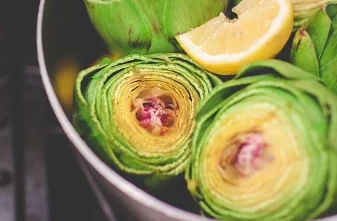
I’m going, to be honest… I had never even heard of artichokes until I was in high school. Fortunately, I have good old Applebee’s to thank for introducing me to the wonder that is spinach and artichoke dip. But that’s not all that artichokes are good for!
This highly underrated thistle, often confused as a vegetable, boasts many benefits! Artichokes are surprisingly very nutrient-rich. They are full of fiber, protein, vitamin C, vitamin K, thiamine, riboflavin, niacin, vitamin B6, folate, iron, magnesium, phosphorus, potassium, calcium, and zinc. One medium artichoke is approximately only 60 calories and includes 7 grams of fiber and 4 grams of protein. They also are low in fat and extremely rich in antioxidants.
An interesting point about artichokes is its potential to have beneficial effects on liver health. Many studies have been conducted that test artichoke leaf extract and its effects. Studies conducted with animals have shown that the extract has the potential to protect the liver and even possibly help the liver cells to regenerate. Another study involving 90 people with the non-alcoholic fatty liver disease showed similar results. The participants took 600 mg of artichoke extract every day for two months. The results of the study showed that the participants had improved liver function after the two months of artichoke consumption.
Artichokes may also improve digestive health. Its high fiber content helps everything in the digestive system to move smoothly. It also makes you feel full for a longer period of time, potentially eliminating overeating. One specific fiber that is found in artichokes is known as inulin and it works as a prebiotic. This prebiotic has been known to aid in improving gut bacteria. One study showed that 12 adults, who all consumed artichoke extract for three weeks, had an improvement in the bacteria of their gut at the end of the study.
According to the Journal of Clinical Biochemistry and Nutrition, artichokes may also have cancer-fighting elements. Artichokes contain flavonoid apigenin, which is a plant nutrient that may be able to help fight breast and pancreatic cancer cells.
Now, you might be trying to mentally calculate how much spinach and artichoke dip you would have to consume in order to reap these benefits, or maybe it’s just me, but unfortunately… that’s not the healthiest option. However, artichokes aren’t exclusive to spinach and artichoke dip (even if my high school self would have sworn it was true). There are many different ways that artichokes can be incorporated easily into your diet.
Here are some recipes to try out:
- Stuffed Artichokes
- Shrimp, Artichoke, and Fresh Ricotta Flatbread
- Braised Baby Artichokes
- Asparagus, Artichoke, and Mushroom Sauté with Tarragon Vinaigrette
- Orzo with Artichoke Pesto and Grilled Corn
- Chicken Piccata with Lemon, Capers and Artichoke Hearts
- Quick Artichoke Salad
- Spring Green Risotto with Artichokes
- Grilled Artichoke Sub
- Grilled Artichokes with Creamy Champagne Vinaigrette
Looking for fresh produce? Fill Your Plate has your back check our searchable database for farmers markets near you!
References
Brown, M.J. (2019) Top 8 Health Benefits of Artichokes and Artichoke Extract. healthline. Retrieved from https://www.healthline.com/nutrition/artichoke-benefits.
Miller, M. (2019) 10 Artichoke Health Benefits You Def Want to Get in On. Women’s Health. Retrieved from https://www.womenshealthmag.com/food/a25951695/artichoke- health-benefits/.
Salem, M.B., Affes, H., Ksouda, K., Dhouibi, R., Sahnoun, Z., Hammani, S., Zeghal, K.M. (2015) Pharmacological Studies of Artichoke Leaf Extract and Their Health Benefits. Plant Foods for Human Nutrition, 70, 441-453.
Turnips and Turnip Greens
Kenda Hettinger, a recent ASU Nutrition Student
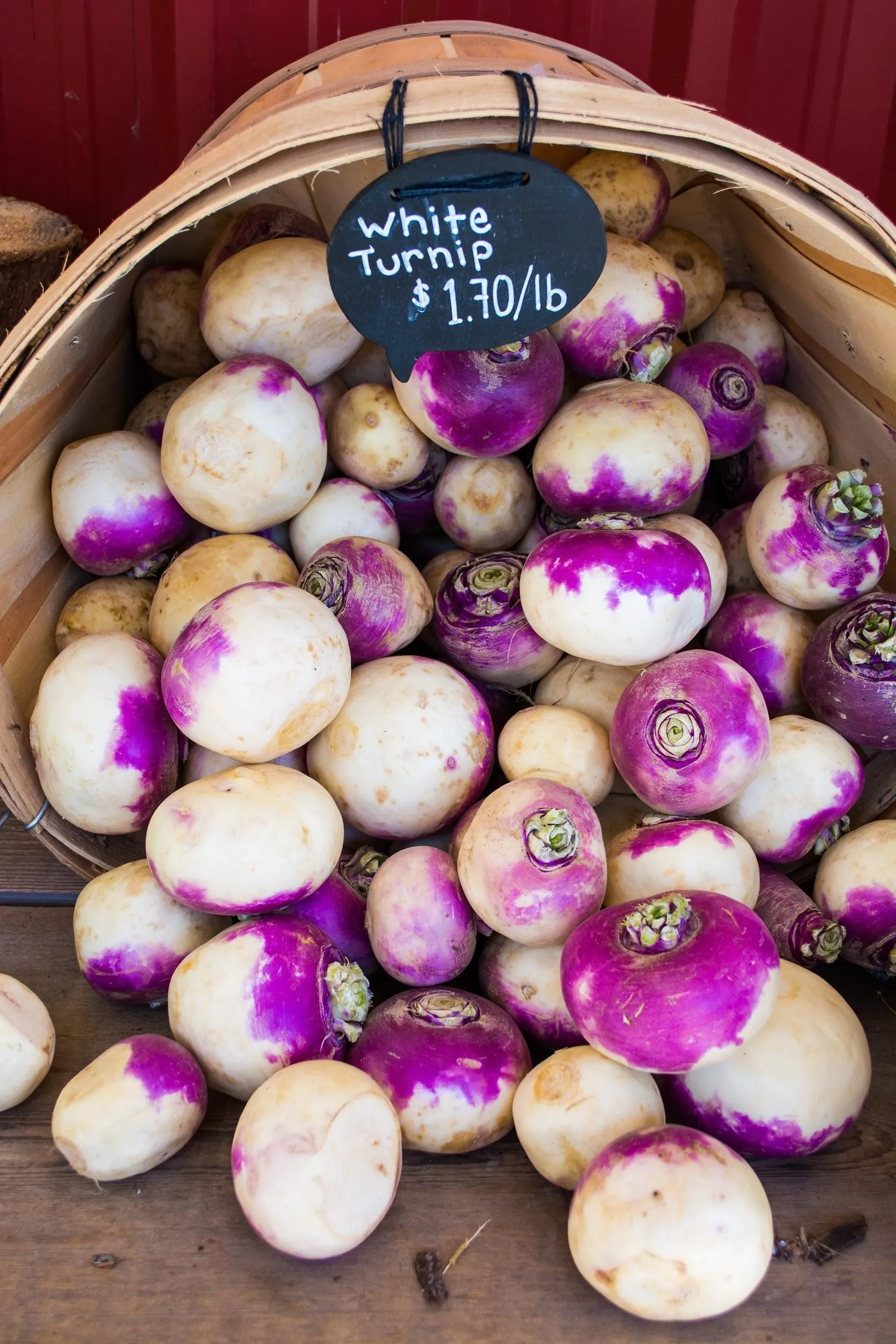
Turnips are thought to originate in Asia but are now grown throughout the world. They are a cold-weather crop and in Arizona grown from November through April. They are often thought of as a root vegetable but they actually belong to the cruciferous family. Like other cruciferous vegetables, they are low in calories and yield high nutritional benefits. Both the root and the green leafy tops can be enjoyed raw or cooked. Turnips and their greens have also been used as livestock feed and to increase the biodiversity of farm soil.
Nutrition
Turnips along with their greens are excellent sources of antioxidants and fiber. A diet high in both of these is known to lower your cancer risk. Fiber also helps to keep you full longer, which aids in weight loss. This powerhouse of a vegetable is also a great source of many vitamins and minerals. It is packed with manganese, calcium, copper, and vitamins B, C, K, A, and E. These vitamins and minerals are thought to help with bone health, cardiovascular health, immunity, vision, and cognition.
Cooking
You can buy turnips with their greens still attached or you can buy the pieces separated. In fact, turnips are now bred to either grown full and delicious greens or bred to grow big delicious turnip roots. You can eat either part raw, boiled, steamed, or sauteed. The turnip root is great roasted or in the air fryer. My favorite way to eat the root is turnip fries in the air fryer. Chop them to look like fries, toss in a little bit of avocado oil, season with some paprika and air fry them for about 25 minutes.

Turnips are so delicious, versatile, and nutritious, I encourage you to start experimenting on ways to include this wonderful vegetable into your diet. To find turnips locally use Fill Your Plate’s find a farm product tool.
For more recipes like this one check out our recipe section. Check out the produce section to find out what produce is in season
Resources
Photo by Vanessa Bucceri on Unsplash
https://www.medicalnewstoday.com/articles/284815.php
https://www.prescottfarmersmarket.org/turnips/
Something to Chew on: Gut Microbiome
By Kenda Hettinger a recent ASU Nutrition Student
Gut microbiome is all of the microorganisms contained in our gastrointestinal tract. There are trillions of them in there. They are so small you need a microscope to see them, but collectively they weight about 2 – 5 pounds. Some are known to cause uncomfortable symptoms, but most are there to keep the bad ones at bay and to benefit our bodies. It used to be thought that you first started to grow your microbiome when you came into contact with your mother’s birth canal as you’re being born, but more current research from Science Translational Medicine suggests that the placenta contains its own unique set of microbiome.
What the microbiome does for us
It helps your immune system by first forming a barrier effect, not letting bad bacteria, viruses, or fungi enter your blood, but then it also communicates with your immune cells to determine how your body reacts to the bad organisms.
We know that a diet high in fiber and probiotics is essential for a healthy microbiome. Together these three aspects are shown to lower your blood lipids, help control your glucose and insulin response, keep your bowels regular, control hunger and weight, and lower your risk of certain types of cancer such as lung and colorectal.
How to help your microbiome flourish
Try to avoid antibiotics. Antibiotics kill any and all bacteria, even the good bacteria in your gut. Although they may be necessary at times, people have been known to overuse antibiotics. The next time you are sick, let your doctor know that you are trying to avoid all unnecessary antibiotics and see if there is another form of treatment.
Avoid artificial sweeteners. A study published in 2014 shows how artificial sweeteners alter your gut bacteria and affects your insulin resistance.
Consume a diet high in prebiotics and probiotics. Probiotics are good bacteria that your gut needs for a healthy microbiome. Prebiotics are substances that come from fiber that your healthy bacteria eats. You can think of it like Prebiotics help the good bacteria (probiotics) grow and flourish so that that the bad bacteria do not take over.
Where to find probiotics
- Yogurt
- Keifer
- Sourkrout
- Tempeh
- Kimchi
- Miso
- Kombucha
- Pickles
Remember when picking foods to add to your diet for the probiotics, that probiotics need to be kept cold. So look for these foods in the refrigerated section. Some things like pickles and sourkrout can be found refrigerated or not. You want to make sure you get the refrigerated one and then eat it cold.
Where to find prebiotics
- Onions
- Leeks
- Garlic
- Asparagus
- Berries
- Legumes, beans, and peas
- Bananas
- Oats
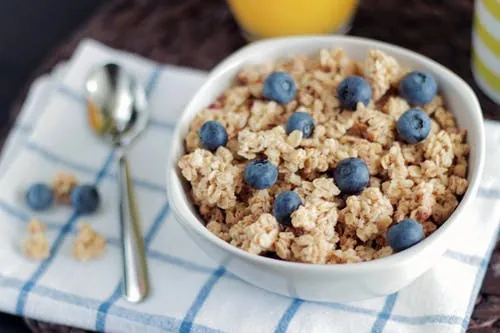
In conclusion, your gut microbiome is very important to help you maintain your weight, regulate your insulin resistance, lower your cancer risk, fight off diseases, have regular bowel movements, and lower your blood lipids. You should consume a diet high in fiber and probiotics to keep your gut microbiome in its best health.
For more recipes like this one check out our recipe section. Check out the produce section to find out what produce is in season.
Resources
Aagaard, Kjersti, Jun Ma, Kathleen M Antony, Radhika Ganu, Joseph Petrosino, and James Versalovic. “The Placenta Harbors a Unique Microbiome.” Science Translational Medicine 6.237 (2014): 237ra65. Web.
Slavin, Joanne. “Fiber and Prebiotics: Mechanisms and Health Benefits.” Nutrients 5.4 (2013): 1417-435. Web.
Jae Jeong Yang, Danxia Yu, Yong-Bing Xiang, William Blot, Emily White, Kim Robien, Rashmi Sinha, Yikyung Park, Yumie Takata, DeAnn Lazovich, Yu-Tang Gao, Xuehong Zhang, Qing Lan, Bas Bueno-de-Mesquita, Ingegerd Johansson, Rosario Tumino, Elio Riboli, Anne Tjønneland, Guri Skeie, J. Ramón Quirós, Mattias Johansson, Stephanie A. Smith-Warner, Wei Zheng, Xiao-Ou Shu. Association of Dietary Fiber and Yogurt Consumption With Lung Cancer Risk. JAMA Oncology, 2019; DOI: 10.1001/jamaoncol.2019.4107
Palmnaes, Marie, Theresa Cowan, Marc Bomhof, Juliet Su, Raylene Reimer, Hans Vogel, Dustin Hittel, and Jane Shearer. “Low-Dose Aspartame Consumption Differentially Affects Gut Microbiota-Host Metabolic Interactions in the Diet-Induced Obese Rat: E109841.” PLoS ONE 9.10 (2014): E109841. Web.
Dates
By Kenda Hettinger a recent ASU Nutrition student
Dates have grown in popularity as the whole food diet has grown in popularity. Dates are a good whole food sweetener. People add dates to their smoothies and desserts, I have even seen it added as a sweetener in barbeque sauce. Dates are in season in the southern part of Arizona June through November.
History of Dates
There are thousands of different species of dates, but the most commonly grown in the US are deglet noor and Medjool. They grow on palm trees and are best grown in hot and arid conditions. This is why they are grown in southern Arizona and California. Dates originated from somewhere around northern Africa, the Middle East, and South Asia. They are a staple in the middle eastern diet. Dates were brought to the United States in the early 20th century by and agricultural explorer, Walter Swingle. Although the Middle East and Africa are still the largest producers of dates, American producers grown around 33,000 tons of dates per year.
Nutritional Information
One hundred grams (about 9) of dates contains 300 calories, 2.5 g protein, 75 g carbohydrates, 7.5 g fiber, vitamins, minerals, antioxidants, and polyphenols. Antioxidants and polyphenols are both prebiotics, which is crucial for gut health. According to the study, Impact of palm date consumption on microbiota growth and large intestinal health: a randomised, controlled, cross-over, human intervention study, the consumption of dates significantly increases bowel movements, reduces stool ammonia concentration, and reduced genotoxicity in human fecal water. This data suggests that dates may help to inhibit the growth of colon cancer cells. They are also thought to promote relaxation and reduce pain during labor. So ladies, grab yourself some local dates.
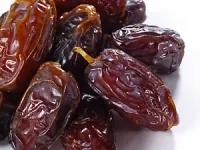
Resources
Eid, N., Osmanova, H., Natchez, C., Walton, G., Costabile, A., Gibson, G., Spencer, J. (2015). Impact of palm date consumption on microbiota growth and large intestinal health: A randomized, controlled, cross-over, human intervention study. 114(8), 1226-1236.
https://en.wikipedia.org/wiki/Date_palm#History
https://www.npr.org/sections/thesalt/2014/06/10/320346869https://nutritionfacts.org/video/benefit-of-dates-for-colon-health/?gclid=Cj0KCQjw6eTtBRDdARIsANZWjYa_qgnBD3j47wTov66nXyCUrjPtczmaDcxHLOwOyGuViWcHjfgTut4aAjfdEALw_wcB/forbidding-fruit-how-america-got-turned-on-to-the-date
https://fdc.nal.usda.gov/fdc-app.html#/food-details/438221/nutrients
Eating to Boost Immunity
By Kenda Hettinger a recent ASU Nutrition Student
My 5-year-old is currently fighting strep throat. We were talking about probiotics and eating healthy to help her get better quicker and she said: “so the probiotic goes through my mouth and into my body and karate chops bad bacteria?” It’s kind of like that.
With the exception of those who are immunocompromised, our bodies do a pretty good job of fighting off what the world throws at it. There are foods that we can consume that help give our immunity an extra hand.
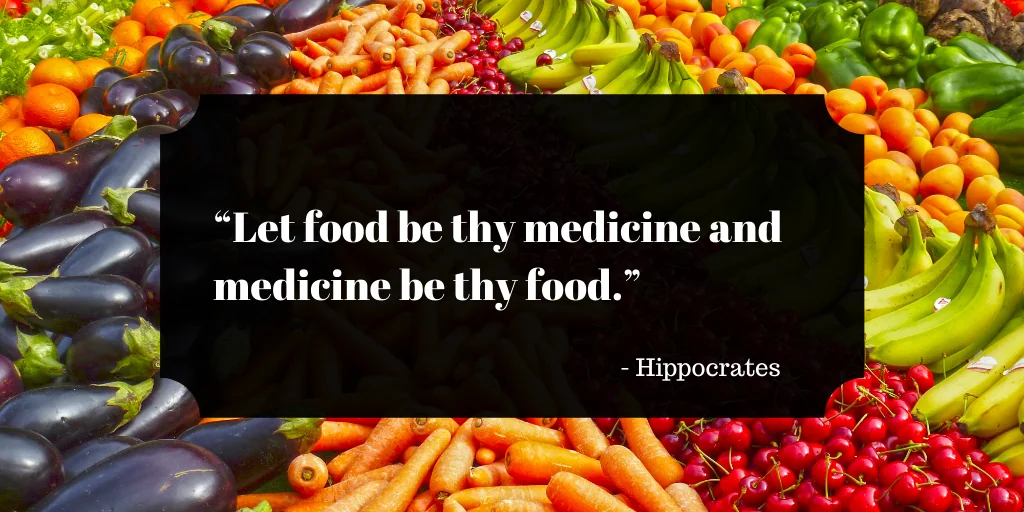
Echinacea
Echinacea is a very useful plant native to North America. It is made into teas, juices, extracts, capsules, and topical formulas. A literature review from 2018 found that consuming 2400 mg per day can help to prevent the common cold. This should be increased to 4000 mg per day after starting to show symptoms to reduce the duration and severity. Hot echinacea tea with honey is a delicious treat when you are not feeling well.
Take an elderberry supplement.
There is not a lot of research on elderberry, but I did find a study done in 2012 that states that elderberry extract increases the activity of Lactobacillus acidophilus in dendritic cells. Dendritic cells are part of our immune system. L. acidophilus is one of the probiotics in yogurt, so perhaps taking your elderberry supplement with a yogurt snack would help boost this benefit.
Yogurt
For optimal immunity and health, you need more good bacteria than bad bacteria. Probiotics help the good bacteria flourish in your gut, crowding out the bad bacteria and preventing viruses from entering your bloodstream. A study in 2012 gave school-aged children found that children who were given probiotics were 18% less likely to develop the common cold symptoms. Yogurt and yogurt drinks commonly contain beneficial probiotics.
Legumes
Legumes, in general, are a good addition to your daily diet due to their high content of numerous vitamins, minerals, and dietary fiber. Legumes are especially beneficial during the cold and flu season due to their zinc content. A literature review completed in 2018, states to increase your zinc intake within 24 hours of the onset of cold symptoms to reduce the duration by about 33%.
Kiwi
Kiwi fruit is high in vitamin C. With 93 mg per 100 G, this gives you more Vitamin C than an orange. Kiwi is also in season in the fall, making it a great-tasting addition to your daily diet. According to a review of literature completed in 2018, regular supplementation of vitamin C may reduce the duration of and severity of the common cold by 8% in adults and 14% in children.
Mushrooms
Vitamin D is known as the sunshine vitamin, but did you know that mushrooms are naturally high in vitamin D? They also contain vitamin C and zinc, making them upper respiratory infections fighting powerhouses. Mushrooms are great in stir-frys, soups, and added fresh to salads.
Green Tea
According to a study published in 2012, the polyphenols and flavonoids found in green tea help to boost your immune system. It also contains an antioxidant called EGCG. EGCG can directly kill bacteria and viruses. Green tea is a powerful food to have in your stay well arsenal this season.
Eating a diet with a wide variety of healthy foods to ensure a good amount of vitamins and minerals is best to keep your body able to fight off infections this winter season.
For more recipes like this one check out our recipe section. Check out the produce section to find out what produce is in season.
Resources
Rondanelli, Mariangela, Alessandra Miccono, Silvia Lamburghini, Ilaria Avanzato, Antonella Riva, Pietro Allegrini, Milena Anna Faliva, Gabriella Peroni, Mara Nichetti, and Simone Perna. “Self-Care for Common Colds: The Pivotal Role of Vitamin D, Vitamin C, Zinc, and Echinacea in Three Main Immune Interactive Clusters (Physical Barriers, Innate and Adaptive Immunity) Involved during an Episode of Common Colds-Practical Advice on Dosages and on the Time to Take These Nutrients/Botanicals.” Evidence-based Complementary and Alternative Medicine : ECAM 2018 (2018): 5813095. Web.
Rerksuppaphol, Sanguansak, and Rerksuppaphol, Lakkana. “Randomized Controlled Trial of Probiotics to Reduce Common Cold in Schoolchildren.” Pediatrics International 54.5 (2012): 682-87. Web.
Chatterjee, Anirban, Mini Saluja, Gunjan Agarwal, and Mahtab Alam. “Green Tea: A Boon for Periodontal and General Health.” Journal of Indian Society of Periodontology 16.2 (2012): 161-67. Web.
Frokiaer, Hanne, Louise Henningsen, Stine Broeng Metzdorff, Gudrun Weiss, Marc Roller, John Flanagan, Emilie Fromentin, and Alvin Ibarra. “Astragalus Root and Elderberry Fruit Extracts Enhance the IFN-beta Stimulatory Effects of Lactobacillus Acidophilus in Murine-Derived Dendritic Cells.” Plos One 7.10 (2012): Plos One, 2012 Oct 30, Vol.7(10). Web.
Morning Oats
By Sarah Beleski a recent ASU Nutrition Student
There are endless possibilities when it comes to cooking or baking with oats. Even out of the kitchen, oats are used in cosmetic products like facial masks1.
Oats have several healthy qualities, making them a perfect candidate for your morning breakfast. But what exactly are oats so healthy for you?
The soluble fiber, beta-glucan, is a major reason why oats are so beneficial1. This powerhouse fiber has been linked to help slow digestion, increase satiety, and even suppress appetite1. It’s no wonder that this breakfast staple has been recommended by nutritionists for years. Who wouldn’t want a breakfast that left them feeling full?
Oats are also helpful in reducing the “bad” cholesterol, otherwise known as your low-density lipoprotein or LDL2. They accomplish this by reducing the absorption of cholesterol into the bloodstream3.
According to the American Heart Association Eating Plan, 25 to 30 grams of fiber should be consumed per day from food alone, not supplements4. One serving of oatmeal can provide 3 to 4 grams of fiber, giving you a solid start to your day3.
Not everyone has the time to sit down in the morning with a hearty bowl of oatmeal, so prepared oats are the way to go! This recipe for breakfast cookies includes oats, bananas, and applesauce that will add more fiber to your morning meal. Keep these breakfast treats in the refrigerator, as they are highly perishable. Take them out when you are ready to eat them and enjoy!
Side Note: Although their name includes “breakfast”, don’t be afraid to eat these whenever you please. They work just fine as an afternoon pick-me-up!
Breakfast Cookies:
Ingredients:
- 3 ripe bananas (mashed)
- 2 cups oats
- 1/3 cup unsweetened applesauce
- 1 egg
- ¼ cup almond or coconut milk
- ½ cup chopped walnuts
- 1 tsp vanilla extract
- 1 tsp cinnamon
- ½ cup dark chocolate chips
Directions:
- Preheat oven to 350 degrees
- Mash bananas in a medium-sized mixing bowl
- Add milk to the mashed bananas and stir
- Add the rest of the ingredients to mixture and stir until everything is fully incorporated
- Place a heaping tablespoon of mixture onto a baking sheet lined with parchment paper and continue until all of mixture is used up
- Bake the cookies for 15-18 minutes or until lightly browned
- Let cool completely on a wire rack and then transfer to the refrigerator for storage
*Will keep in the refrigerator for 5 days*
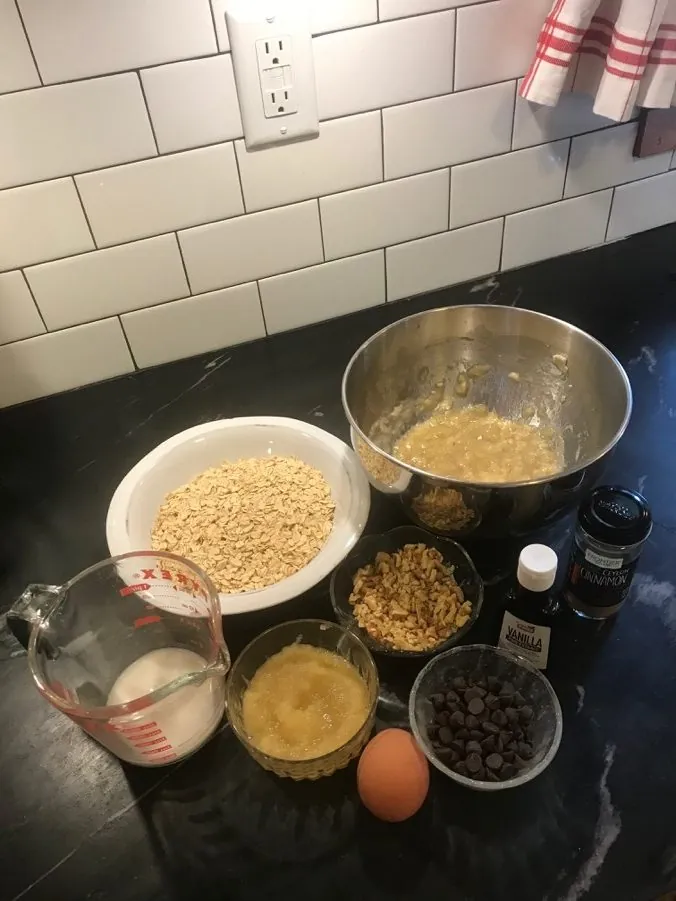
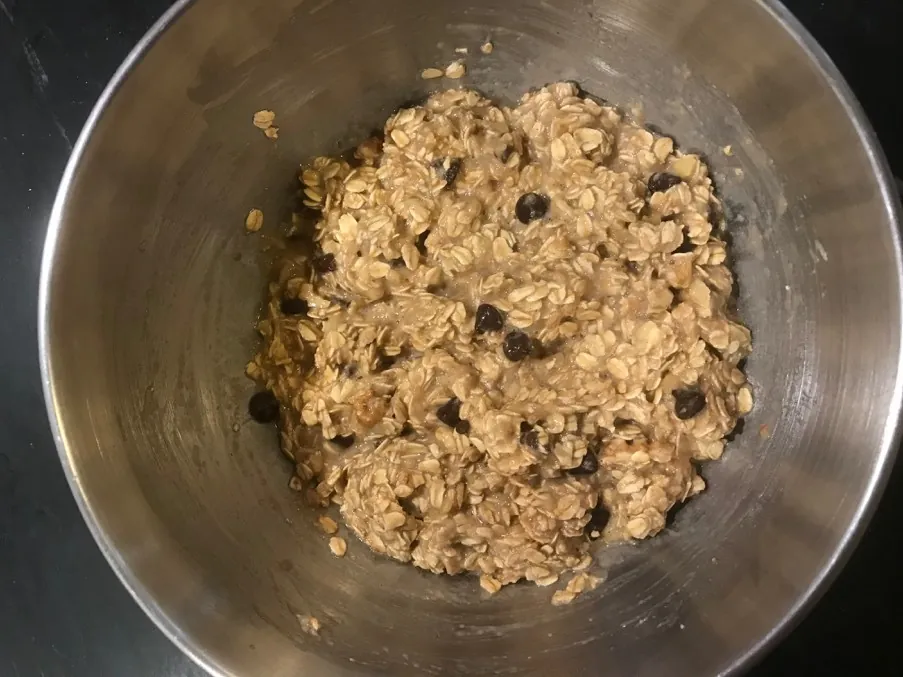

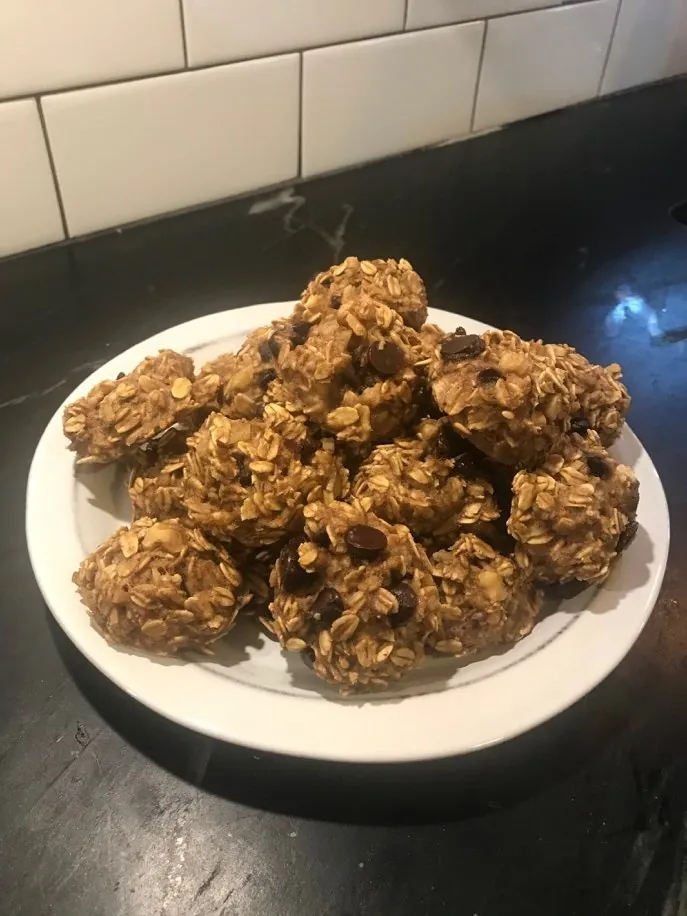
References
- Harvard T.H. Chan School of Public Health: The Nutrition Source. https://www.hsph.harvard.edu/nutritionsource/food-features/oats/.
- SELF Staff. Why Oatmeal Might Make You Gain Weight. Sept 2, 2011. https://www.self.com/story/why-oatmeal-make-you-gain-weight.
- Mayo Clinic Staff. Cholesterol: Top foods to improve your numbers. July 17, 2018. https://www.mayoclinic.org/diseases-conditions/high-blood-cholesterol/in-depth/cholesterol/art-20045192.
Increasing Fiber Intake. UCSF Health. https
Everything About Pumpkins
By Julie Murphree, Arizona Farm Bureau Outreach Director
A bit of Arizona history says that before Phoenix was officially named, locals used to call the area Pumpkinville because of all the wild pumpkins that grew in and around what we now know as Phoenix, Arizona. Those pumpkins one might have seen growing wild were part of a mix of crops that Native Americans in the area grew along with squash, corn and even cotton back then.
Not as big as the pumpkin in the Guinness World Record book (see fun facts below), but Arizona’s heaviest pumpkin was 693 pounds. https://www.azgpg.com/Arizona_Records.html
In Arizona, we’re celebrating pumpkins on so many of our family farms. The 2017 Census of Agriculture, the USDA’s most recent, shows 241 acres grew pumpkins in our state from 114 farms. In the meantime, you can go to Fill Your Plate’s “Visit A Farm” and search for farms you and visit that will have pumpkins to pick this fall season!
Nationally, Illinois is the number one pumpkin grower with over 17,000 acres. Most of the acres (79%) were designated as processing pumpkins. Looks like Pennsylvania is number two at almost 6,900 total acres of pumpkins. New York is ranked third with 5,900 acres of pumpkins.

The Fun Facts about Pumpkins
- The name pumpkin comes from the Greek word ‘pepon,’ meaning large melon.
- Colors like red, yellow, and green and a variety of names like Hooligan, Cotton Candy, and Orange Smoothie are proof that more than 45 different varieties of pumpkins exist.
- The pumpkin is a member of the Curcubita family which includes squash and cucumbers. These plants are native to Central America and Mexico.
- Pumpkins have been grown in North America for five thousand years. They are indigenous to the western hemisphere and a common crop among native American tribes that farmed.
- Eighty percent of the pumpkin supply in the United States is available in October. While they vary in weight, a good-sized pumpkin is typically 10 to 13 pounds.
- And, giant pumpkins can be grown for competitions, with some weighing more than 1,000 pounds. According to https://www.guinnessworldrecords.com/world-records/heaviest-pumpkin, the largest pumpkin was 2624.6 pounds. But don’t hold your breath, these records are there to be broken.
- As a food, pumpkin can be baked, roasted, steamed or boiled. Pumpkin sour and roasted pumpkin seeds have become a favorite of the many food pumpkins can be made into.
- On average, each pumpkin contains approximately 500 seeds, and why we have plenty for roasting and salting from just one of our pumpkin.
- Pumpkins take between 90 to 120 days to grow. High in iron, they can be roasted to eat.
- And on the health-kick note, pumpkins contain potassium and Vitamins A and B. Pumpkins are also low in calories, fat and sodium and high in fiber. Additionally, they are a good source of protein. 100 grams of pumpkin produces around 26 calories of energy.
- The flowers that grow on the pumpkin vines are also edible.
- Pumpkins are grown on every continent except Antarctica.
- Morton, Illinois is the self-proclaimed pumpkin capital where you’ll find the home of the Libby corporation’s pumpkin industry. But it has every right since according to USDA’s latest Census of Agriculture identifies Illinois as the number one pumpkin grower with more than 17,000 acres, most designated for processing pumpkins.
- The original jack-o-lanterns were made with turnips and potatoes by the Irish. When they migrated to the United States the brought the tradition with them but as Americans, we discovered a pumpkin was as easy to carve. In England, they used large beets and lit them with embers to ward off evil spirits.
- In early colonial times, pumpkins were used as an ingredient for the crust of pies, not the filling.
- Pumpkins were once recommended for removing freckles and curing snake bites.
- A Connecticut field variety is the traditional American pumpkin.
- Pumpkins are 90 percent water.
- Native Americans flattened strips of pumpkins, dried them and made mats.
- Native Americans used pumpkin seeds for food and medicine.
- More than 1.5 billion pounds of pumpkin are produced each year in the United States, and yes, many of them are coming from Illinois. Other top producing states are Indiana, Ohio, Pennsylvania, and California.
- In 1584, after French explorer Jacques Cartier explored the St. Lawrence region of North America, he reported finding “gros melons.” The name was translated into English as “pompions,” which has since evolved into the modern “pumpkin.”
- Pumpkin pie is a sweet dessert that originates in North America and is traditionally eaten during harvest time and holidays such as Thanksgiving and Christmas.
- Pumpkins are popular decorations during Halloween. A carved pumpkin illuminated by candles is known as a ‘jack-o-lantern’. The tradition is believed to have come from Ireland, where they used to carve faces into turnips, beet, and other root vegetables as part of the Gaelic festival of Samhain.
- Native Americans grew and ate pumpkins and their seeds long before the Pilgrims reached this continent. Pilgrims learned how to grow and prepare pumpkins from the Native Americans.
- Pumpkin was most likely served at the first Thanksgiving feast celebrated by the Pilgrims and the Native Americans in 1621.
- The earliest pumpkin pie made in America was quite different than the pumpkin pie we enjoy today. Pilgrims and early settlers made pumpkin pie by hollowing out a pumpkin, filling the shell with milk, honey and spices and baking it.
On Arizona Farm Bureau’s Fill Your Plate website we have lots of pumpkin recipes. A favorite might be Gertie Hickman’s pumpkin pie.
Healthy Pumpkin Waffles
By: Angela Bates a recent ASU Nutrition Student
When it’s autumn and you want something pumpkin spice for breakfast, but coffee isn’t it, try waffles! The crispy, fluffy cousin of pancakes, waffles have lovely little places for the butter to go and they can really fill you up when they’re made from good ingredients. Now, you never have to decide how to get your pumpkin spice fix or wonder if you can get it without crazy amounts of sugar. These waffles have it all with whole grains, can be dairy-free, and have very little sugar. Canned pumpkin lends some fiber and vitamin A to keep your eyes and stomach healthy.
A recommendation I would make is to get a nice nonstick waffle iron. It makes clean up so much easier and ensures a crisp crust on your waffles. I purchased mine for just $12 brand new and it makes consistently great waffles. Don’t forget, with waffles, there’s no flipping necessary! Easy and tasty.
With this recipe, feel free to substitute any dairy-free milk or buttermilk for the milk and coconut oil or vegetable butter in place of the butter. If substituting coconut oil, adjust to slightly less to reduce the oiliness in the finished waffles. The eggs are the only binder, so replacing them is not advisable. Make your own oat flour to save a lot of money. Just put the number of quick oats or old-fashioned oats needed in a blender or food processor and grind to a coarse powder. I love these with some maple syrup and butter!

Ingredients:
2 1/4 cups oat flour (gluten-free if needed)
1 tablespoon baking powder (I like reduced sodium)
1/2 teaspoon salt
1 teaspoon cinnamon
1/2 teaspoon ginger
1/2 teaspoon pumpkin pie spice
3 eggs, room temperature
2/3 cup milk, room temperature
7 tablespoons butter, melted and cooled slightly
1/2 cup packed canned pumpkin
2 tablespoons maple syrup or honey
2 teaspoons vanilla extract
Instructions:
In a large bowl, whisk together oat flour, baking powder, salt, and spices.
In a medium bowl, whisk the eggs and milk together. Add the milk, oil, pumpkin, maple syrup, and vanilla.
Make a well in the dry ingredients and pour in the wet ingredients. Whisk together until just combined.
Let the batter sit for at least 10 minutes so the oat flour can absorb the liquid.
When ready to make the waffles, preheat your waffle iron and give the batter another stir.
Scoop up the amount of batter needed for your waffle iron and place in the center of preheated iron.
Once crisp, remove waffle and place on a cooling rack so they don’t get soggy.
Looking for more recipes? Check out the Fill Your Plate recipe section. If you liked this article, then you will love the Fill Your Plate blog.
Arizona is Sweet on Apples!
By Julie Murphree, Arizona Farm Bureau
Because “Apple Month” occurs in the fall, October by the way, and Arizona families are focused on making the delicious, healthy fruit such an important part of all their fall and holiday cooking and celebrating, Arizona families need to know that Johnny Appleseed may have made it to our desert state, but it’s our apple farmers that are really allowing us to pick this amazing and versatile fruit.
According to Robert E. Call, U. of A. retired extension agent who covered Cochise and Graham counties as a horticulture educator, “Apples are actually one of the most difficult crops to grow,” he says. “To be productive and truly grow them right you have to do 63 different production steps to take care of the trees.”
While Briggs & Eggers, farming in the Willcox area, is Arizona’s only commercial apple producer, our smaller U-pick apple farms also help us get to our Arizona apples. Plus, Briggs & Eggers is on Fill Your Plate because it sells some roadside stand apples. Briggs and Eggers also ship all over the United States and is the only grower of Pink Ladies during the fall period in Arizona because of the state’s four-week jump on the harvest season.
“We’ve been USDA certified organic since 1989,” says Lance Eggers of Briggs & Eggers. “We can pack 1,000 boxes a day at the height of the season. We produce a quality product and are focused on maintaining a reputation of a real good, high-quality grower and packer.”
Members of Arizona Farm Bureau, Briggs & Eggers now have approximately 460 acres of apple orchards. They’re currently producing 500 tons of apples per year, but once all the trees are producing will ship anywhere from 3,000 to 4,000 tons of apples to Florida and New York on the East Coast and San Francisco and San Diego on the west coast and everywhere in between. You can find them in all the specialty organic markets under the Covilli label and watch for the “grown and packed by Briggs and Eggers” to find out they grew in our bright Arizona sun.
Eggers also said he sees “a bright future for apples in Arizona and one of the reasons we’re tied in with a national distributor and co-pack for them.” He adds, “We see a good market for our organic apples and a lot of opportunity to grow our market.”
We also have the well-known Apple Annie’s, also Farm Bureau members, that Arizona families have come to love and make part of their fall family trek to the farm.
The best news? Arizona apples have some unique qualities that Arizona apple growers can be proud of.
- Arizona apples are sweeter overall than just about any other state because they love the sun. Our 300+plus days of sun produce some very sweet fruit.
- This includes the Granny Smith Apple that most people think is sour and tart. The Arizona Granny Smith apple has a sweet tartness to it that’s like none other.
- Because of our climate, our apple harvests get a 3 to 4 week jump on the market.
- We grow a variety of apples: Delicious, Gala, Fuji, Pink Lady, Sundowner and Granny Smith
Arizona’s climate has always been a key component to our state’s success in agriculture. As we celebrate Arizona Farm Bureau’s centennial in the coming years and the state’s 5 “C’s” we hope to continue celebrating climate and agriculture into the future. Our Arizona apples certainly do!

More Fun Facts about Apples
- Apples are a member of the rose family, just like pears and plums. They can range in size from as small as a cherry to as big as a grapefruit.
- The crabapple is the only apple native to North America.
- An apple tree can live for more than 100 years.
- 2,500 varieties of apples are grown in the United States, but only 100 varieties are grown commercially in 36 states in America. They grow in all 50 states. It’s estimated that 7,500 varieties of apples are grown throughout the world.
- Apples come in all shades of red, green, and yellow.
- A standard-size apple tree starts bearing fruit 8 to 10 years after it’s planted. A dwarf tree starts bearing in 3 to 5 years. Most apple blossoms are pink when they open, but gradually transition to white.
- Apple trees can be grown farther north than other fruit trees because they bloom late in spring, minimizing the chance of frost damage.
- 25 percent of an apple’s volume is air; that’s why they float.
- Most apples are still picked by hand in the fall.
- Americans eat more apples per capital than almost any other fruit fresh and processed combined (with the possible exception of the tomato, which is a fruit). In fact, the average person eats 65 apples each year.
- Two pounds of apples make one 9-inch pie.
- Apple blossom is the state flower of Michigan.
- Apples are fat, sodium, and cholesterol free. They contain high levels of boron, which increases mental alertness. And, apples also contain malic acid, a chemical used in teeth whitening products, which helps dissolve stains.
- A medium apple is about 80 calories.
- Apples are a great source of the fiber pectin. One apple has five grams of fiber.
- The pilgrims planted the first United States apple trees in the Massachusetts Bay Colony.
- The science of apple growing is called pomology.
- Apple trees take four to five years to produce their first fruit.
- Apple varieties range in size from a little larger than a cherry to as large as a grapefruit.
- Apples are propagated by two methods: grafting or budding.
- The apple tree originated in an area between the Caspian and the Black Sea.
- Apples were the favorite fruit of ancient Greeks and Romans.
- Apples harvested from an average tree can fill 20 boxes that weigh 42 pounds each.
- The largest apple picked weighed three pounds.
- Europeans eat about 46 pounds of apples annually.
- The average size of a United States orchard is 50 acres.
- Many growers use dwarf apple trees.
- Charred apples have been found in prehistoric dwellings in Switzerland.
- Some apple trees will grow over 40 feet high and live over 100 years.
- Most apples can be grown farther north than most other fruits, because they blossom late in spring, minimizing frost damage.
- It takes the energy from 50 leaves to produce one apple.
- Apples are the second most valuable fruit grown in the United States. Oranges are first.
- In colonial time, apples were called winter banana or melt-in-the-mouth.
- Apples have five seed pockets or carpels. Each pocket contains seeds. The number of seeds per carpel is determined by the vigor and health of the plant. Different varieties of apples will have different number of seeds.
- World’s top apple producers are China, United States, Turkey, Poland and Italy.
- The Lady or Api apple is one of the oldest varieties in existence.
- Newton Pippin apples were the first apples exported from America in 1768, some were sent to Benjamin Franklin in London.
- In 1730, the first apple nursery was opened in Flushing, New York.
- One of George Washington’s hobbies was pruning his apple trees.
- America’s longest-lived apple tree was reportedly planted in 1647 by Peter Stuyvesant in his Manhattan orchard and was still bearing fruit when a derailed train struck it in 1866.
- Apples ripen six to ten times faster at room temperature than if they were refrigerated.
- A peck of apples weight 10.5 pounds.
- A bushel of apples weights about 42 pounds and will yield 20-24 quarts of applesauce.
- Archeologists have found evidence that humans have been enjoying apples since at least 6500 B.C.
- The world’s largest apple peel was created by Kathy Wafler Madison on October 16, 1976, in Rochester, NY. It was 172 feet, 4 inches long. (She was 16 years old at the time and grew up to be a sales manager for an apple tree nursery.) (Source: Guinness World Records)
- It takes about 36 apples to create one gallon of apple cider.
- Apples account for 50 percent of the world’s deciduous fruit tree production.
- The old saying, “An apple a day, keeps the doctor away” comes from an old English adage, “To eat an apple before going to bed, will make the doctor beg his bread.”
- Don’t peel your apple. Two-thirds of the fiber and lots of antioxidants are found in the peel. Antioxidants help to reduce damage to cells, which can trigger some diseases. In fact, apples are an excellent source of fiber; one medium apple contains 5 grams of fiber, including the soluble fiber pectin.
- In 2005, United States consumers ate an average of 46.1 pounds of fresh apples and processed apple products. That’s a lot of applesauce!
- Sixty-three percent of the 2005 U.S. apple crop was eaten as fresh fruit.
- In 2005, 36 percent of apples were processed into apple products; 18.6 percent of this is for juice and cider, two percent was dried, 2.5 percent was frozen, 12.2 percent was canned, and 0.7 percent was fresh slices. Other uses were the making of baby food, apple butter or jelly and vinegar.
- The top apple producing states are Washington, New York, Michigan, Pennsylvania, California and Virginia.
- In 2006, 58% of apples produced in the United States were produced in Washington, 11% in New York, 8% in Michigan, 5% in Pennsylvania, 4% in California and 2% in Virginia.
- Almost one out of every four apples harvested in the United States is exported.
- Many apples after harvesting and cleaning have commercial grade wax applied. Waxes are made from natural ingredients.
- National Apple Month is the only national, generic apple promotion conducted in the United States. Originally founded in 1904 as National Apple Week, it was expanded in 1996 to a three-month promotional window from September through November.
- On August 21, 2007 the GoldRush apple was designated as the official Illinois’state fruit. GoldRush is a sweet-tart yellow apple with a long shelf life. The apple is also the state fruit of Minnesota, New York, Vermont, Washington and West Virginia.
Go to Fill Your Plate for recipes with apples and to read more articles about health, nutrition and the food Arizona agriculture produces.
Dietary Guidelines for Americans
By Kat Brown A recent ASU Nutrition Student
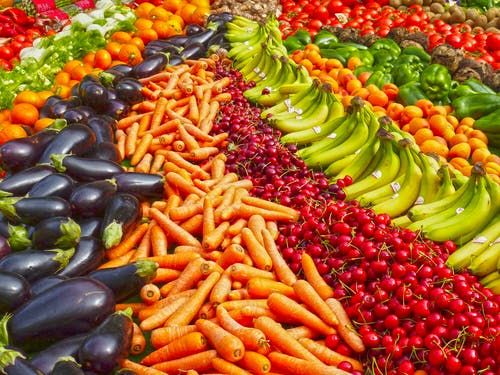
Nutrients supply energy and are often the building blocks our bodies need to function. Each nutrient has a role in the body. The Dietary Guideline for Americans (DGA) is developed to make recommendations on what foods and nutrients should be consumed and in what quantities. While much debate exists as to what’s the perfect diet for the average American, the goal of these guidelines is to prevent chronic disease and promote health. These guidelines are often used as the basis for nutrition policy at the federal, state, and local level. The guidelines are updated every 5 years. These guidelines are put together by experts from all over the country. The combination of nationally recognized practitioners, medical researchers, and academic contributors form what is called the Advisory Committee. The 2015 Advisory Committee consists of 73 individuals from various fields and affiliations, to view the list of participants click here.
The 2015 Dietary Guidelines are the most recent guidelines are designed to help people choose a healthy diet and 3 main focuses:
- Balance calories with physical activity to manage weight
- Consume more fruits, vegetables, whole grains, dairy products, and seafood
- Limit foods with sodium (salt), trans fats, cholesterol, added sugars, and refined grains
Often times people focus on what they have to eliminate from their diet and it can seem overwhelming and restrictive. Instead, focus on adding nutrient-dense foods to your diet and try to “eat the rainbow”. This helps to prevent sitting down with a giant plate of beige foods. Often times foods high in added sugars and fats are more affordable than healthier food options. A good tip for planning meals on a budget is to choose vegetables that are on sale and add them to dishes you already make. This will bulk up the meal and provide essential nutrients, also you are more likely to get full from the fiber the vegetables will provide help to minimize portion sizes.
Limiting added sugars has become a large focus and is often a source of added calories that can have negative effects on an individual’s health. Added sugars can come from lots of sources but most often come from processed foods and sodas. Consumption of sugar-sweetened beverages such as soda has been linked to higher calorie intake, lower nutrient intake, and an increased risk for obesity. The American Heart Association also recommends minimizing consumption of beverages that contain added sugars in order to promote heart health and reduce the risk of cardiovascular disease. Eliminating soda from your diet or cutting back your soda consumption is a quick and easy way to eliminate added sugars from your diet.
Another easy way to cut back excess calories is to know your portion sizes. We have become so used to giant portion sizes in our country that when you first start measuring our actual portion sizes you might be in for a surprise. While the DGA is designed to help us make the best dietary decisions they don’t correlate with food companies. So when you look at food labels in the store all serving sizes vary and may not necessarily correlate with an actual serving size of that food item. A study from 2001 found that portion for foods such as cookies, pasta, and bagels was listed anywhere from 200-700% over the recommended USDA portion size. This can make it confusing and may seem like more work at first. Once you start to see what an actual portion size is and how it looks on your plate it won’t take long until you can identify proper portion sizes.
Looking for more tips and tricks like this to keep your family happy and healthy? Check out the Fill Your Plate Blog. Looking for some new recipes to try out? Check out the Recipe Section of our website. How about some fresh produce that the whole family will enjoy? Check out the local Farmers Markets near you.
The Use of Food to Fight Cancer
By Alexandra Pettit, AZFB Communications Intern
For many, the word cancer doesn’t mean much until it touches your life, and when it does this simple word “cancer” changes your life forever. If there was something you could do to try to prevent it would you? The answer for most would be yes! What if I told you that with the use of proper diet and exercise you could reduce your risk and your family’s risk of many types’ cancers. Would you be willing to give it a try?

The American Institute for Cancer Research has found “that excess body fat can increase the risk of twelve different types of cancers.” So, the question is, “What types of foods should I be eating, and what types of foods should I be steering clear of?”
Foods to avoid in Large Quantities:
- Alcohols
- Sugars
- Fats
When looking at these foods realize that not all sugars and fats are bad.
Food to eat:
- Fruits & Vegetables
- Fiber-rich foods (Whole grains and beans)
- Spices with anti-inflammatory properties (Turmeric)
- Low-fat dairy products
- Olive oil, Nuts, and Seeds
When eating vegetables think green, you want to be eating veggies and fruits with high nutrient and vitamin content. Fiber is also important to a healthy diet, and eating spices with anti-inflammatory properties can help reduce the production of cancer cells. These types of food open a wide variety of options for meals and snacks. These types of food groups are very similar to the Mediterranean diet, which Fill Your Plate has coved a lot in the last year.
Articles on the Med Diet: https://fillyourplate.org/?s=Med+Diet
Is changing up your diet and exercise routine worth it to you? As someone who has been touched by the dangers and heartbreak of cancer, I am willing to make these simple changes to my life.
Editors Note: Changing diet and exercise does not guarantee the risk of cancer will be zero. However, studies have shown that it can lower your risk tremendously.
For more articles like this check out the Fill Your Plate Blog. Looking for some fresh produce? Check out our Farmer’s Market tab to find one near you.
References:
Obesity and cancer: https://www.aicr.org/learn-more-about-cancer/infographics/infographic-obesity-and-cancer.html
Foods that Fight Cancer: https://www.aicr.org/foods-that-fight-cancer/
Medical News Today: https://www.medicalnewstoday.com/articles/316720.php
How dietary change might boost cancer therapy: https://www.medicalnewstoday.com/articles/325939.php
The T on Tomatoes
Julie Murphree, Arizona Farm Bureau Outreach Director
Let’s talk tomatoes, the world’s most popular fruit and in Arizona too! The United States Department of Agriculture’s (USDA) 2017 Census of Agriculture shows Arizona hosting 61 acres of tomatoes grown in the open (The United States has 335,000+ acres), though this isn’t counting the various tomato plants you might have in your backyard garden. Plus, about 33% of Arizona’s open-grown-tomato acres are in Maricopa County and another nearly 20% grown in Yavapai County.
Also, from the 2017 Census, the United States greenhouse tomato sales were valued at $419 million. Based on the value of sales, Arizona is at $14.1 million, this makes our state the sixth highest producer in the U.S., behind California, Texas, Ohio, New York, and Minnesota, in greenhouse-grown tomatoes. Bet you didn’t realize that!
From USDA’s annual estimating program, U.S. open-field tomato production in 2017 was dominated by California, which grew 90% of the total production. The U.S. open-field tomato production totaled 246 million cwt (~12.3 million Tons) and was valued at $1.68 Billion. This includes both fresh and processing tomatoes. Arizona is not in the annual estimating program.
But we can’t leave you hanging on the vine without sharing some of our favorite facts about tomatoes.
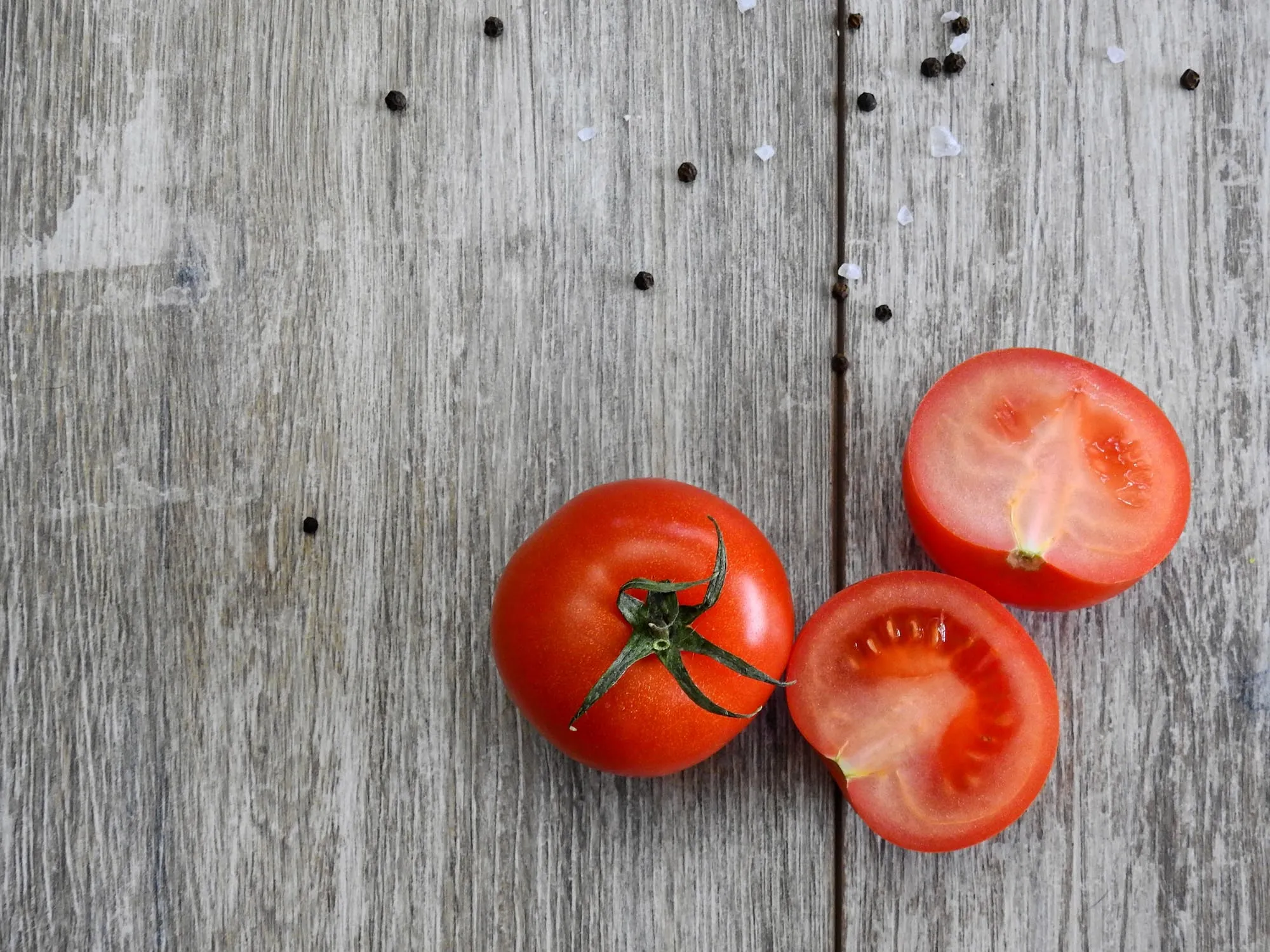
- Arizona ranks 6th in U.S. greenhouse tomato production.
- The plants typically grow to 3 to10 ft in height and have a weak stem that often sprawls over the ground and vines over other plants. It is a perennial in its native habitat, although often grown outdoors in temperate climates as an annual. An average common tomato weighs approximately 4 ounces. They come in yellow, pink, purple, black and even white colors with7,500 to 10,000 varieties worldwide.
- Tomatoes are considered the world’s most popular fruit with annual production of 60 to 125 million tons worldwide helping them remain the most demanded fruit in the world. Second spot goes to bananas and third to apples, followed by oranges and watermelons.
- Types of tomatoes include slicing (globe) tomatoes used in processing and for fresh eating. Beefsteak tomatoes are large, often used for sandwiches. Oxheart tomatoes vary in size and are shaped like large strawberries. Plum tomatoes (including pear tomatoes), are usually oblong, and used in tomato sauce and paste. Cherry tomatoes are small round, often sweet and eaten whole in salads. Campari tomatoes are sweet and juicy of small to medium size. Plus, the tomato is a member of the nightshade family of plants, which also includes eggplant, goji berries, potatoes, and chili peppers.
- Found at Walt Disney World Resort, Florida the largest single tomato plant in the world covers an area of 56.73 square meters. That’s bigger than an Olympic-size swimming pool.
- Tomatoes are also an excellent source for vitamin C, biotin, molybdenum, and vitamin K. They are also a very good source of copper, potassium, manganese, dietary fiber, vitamin A (in the form of beta-carotene), vitamin B6, folate, niacin, vitamin E, and phosphorus.
- Tomatoes are rich in lycopene, an antioxidant that is good for the heart and effective against certain cancers. Cooked tomatoes are actually better for you than raw ones, as more beneficial chemicals are released.
- The tomato is eaten in many ways, raw like a fruit, as an ingredient in many dishes, sauces, salsas, salads, processed into ketchup or tomato soup. Tomato juice is made as a drink and used in cocktails like a Bloody Mary.
- Scientifically speaking, tomatoes are a fruit. True fruits are developed from the ovary in the base of the flower and contain the seeds of the plant.
- In 1887, U.S. tariff laws imposed a duty on vegetables, but not on fruits. This meant the status of tomatoes became a matter of legal importance. The U.S. Supreme Court ruled in the case of Nix versus Hedden that tomatoes were to be considered vegetables based on the popular definition that classifies vegetables by use, where they are usually served with dinner and not as a dessert. However, the courts did not reclassify the tomato botanically, it is still a fruit.
- 600,000 tomato seeds traveled to the International Space Station and back before being grown in school classrooms all over Canada as part of the ‘Tomatosphere I, II, III and IV’ experiments.
- Historians say tomatoes originally came from Peru, where their Aztec name translated to pump thing with a navel.
- The first tomatoes in Europe may have originally been yellow.
- Tomatoes are very popular in Mediterranean cuisines such a Italian. They are an important ingredient in pizza and pasta sauces.
- China is the number one producer of tomatoes around the world. The U.S. is second.
- Tomatoes are the state vegetable of New Jersey. But they are the official state fruit of Ohio and tomato juice is the official beverage of Ohio. However, Arkansas took both sides by stating the South Arkansas Vine Ripe Pink Tomato is the state fruit and state vegetable, due to its culinary and botanical classification.
- La Tomatina tomato fight in Buñol near Valencia, Spain happens every year on the last Wednesday in August though the partying starts earlier in the week. The highlight of the festival is the tomato fight which takes place between 11 am and 1 pm on that day. About 242,500 pounds of tomatoes are pelted at everything that moves. The event has become one of the highlights on Spain’s summer festivals calendar with thousands of people flocking to this little Valencian town for this chaotic event. And, after the La Tomatina, the village cobblestone streets are pristine due to the acidity of the tomatoes disinfecting and cleaning the surfaces, according to Wikipedia.
- Did you know Heinz Tomato Ketchup has a speed limit? If the yummy sauce pours at more than 0.028mph when it’s in the Heinz Tomato Ketchup factory, it’s considered too runny and rejected!
- According to the History Channels, tomatoes were put “on trial” on June 28, 1820, in Salem, New Jersey. In front of a courthouse, Robert Johnson ate a horde of tomatoes in order to prove they weren’t poisonous. The crowd waited for him to die. He didn’t.
- And, in Arizona we grow lots of tomatoes from backyard gardens to large greenhouse production in Willcox with Naturesweet Tomatoes Farm.
Want some tomato-based recipes or looking to learn how to grow your own tomatoes in Arizona’s climate? Then go to fillyourplate.org, Arizona Farm Bureau’s website full of blog stories about health and nutrition and gardening. Most of our recipes are provided by Arizona’s own farm and ranch families.
Electrolytes: What and Why?
By Angela Bates a Recent ASU Nutrition Student
We all know electrolytes are important and that they do something for us, but their exact function and importance is little known. More than just what can be found in a bottle of Gatorade, electrolytes keep your cells functioning and the balance is delicate. Knowing what electrolytes are, how they affect the body, and where to get them in your diet is good to know.
Electrolytes are the minerals that have an electric charge. In other words, they can be ionized, which means they can conduct electricity. The electrolytes in our bodies keep the fluid balance within a specific range, move nutrients into cells and waste out of cells, keep the pH (acid-base) levels balanced, and—as anyone who has had a leg cramp after running has found out—they help conduct the electrical impulses in the body’s nerves, muscles (heart included). They keep your muscles contracting and relaxing at the correct rates and even play a role in blood clotting. Without electrolytes, your heart would not beat.

The electrolytes in the body are sodium, potassium, calcium, chloride, bicarbonate, copper, zinc, magnesium, iron, manganese, phosphate, molybdenum, and chromium. The seven most important electrolytes in the human body are sodium, potassium, magnesium, calcium, phosphate, chloride, and bicarbonate. Electrolytes can be found in the blood, tissues, cerebrospinal fluid, and urine and they enter the body through the digestive tract. So, the electrolytes you eat and drink are absorbed when consumed through normal digestion. They are lost mostly through urination, but also through sweating and excretion, which is why excessive sweating, vomiting, and diarrhea can cause a drastic loss in electrolytes.
One thing that makes electrolyte balance so difficult for the body is that an overabundance on of electrolyte can cause severe drops in another. Similarly, a drop in a particular electrolyte can trigger a spike in another. This can have many symptoms, which will be covered later. The body tries to return to balance itself, but sometimes, we need to take in more electrolytes to help. Each individual electrolyte has its own special functions.
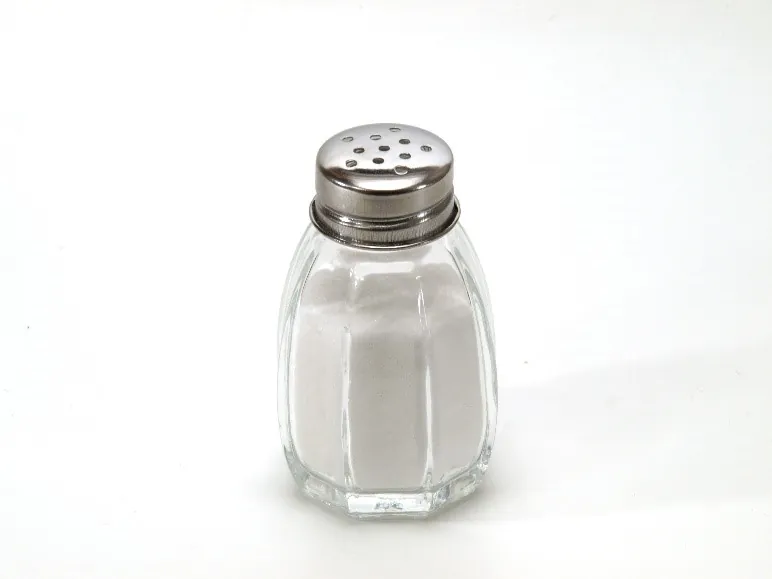
Sodium is not the enemy, but it does have to be consumed with care. For instance, a heart patient commonly told that they should avoid salt as much as possible. Sodium naturally occurs in many foods in small amounts, but in packaged or prepared foods, the levels can be astronomical. Sodium is very important, as it regulates the pressure gradient of fluids between cells. It’s fairly common knowledge that excess sodium causes blood pressure to rise, but too little sodium can be fatal as well, by swelling in the brain and red blood cells. Too little sodium can be caused by overconsuming fluids like water, which dilutes electrolytes in the body, or congestive heart failure.
Can a banana prevent cramps after your morning run? Bananas are a well-known source of potassium, which interacts with the same pumps as sodium in the cells. Potassium, along with calcium, helps tell neurons and muscle fibers when to rest or contract. It also plays a large part in the water and acid-base balance of the body. As with all the other electrolytes, too little or too much potassium can be dangerous, though getting too much potassium from food sources is almost unheard of unless there is an underlying medical condition. With too much potassium, the heart will not relax after a short time, which is a critical medical situation that requires emergency care. In some cases, a lack of potassium can result from too much sodium intake, so being careful not to consume a lot of sodium helps keep these levels balanced.
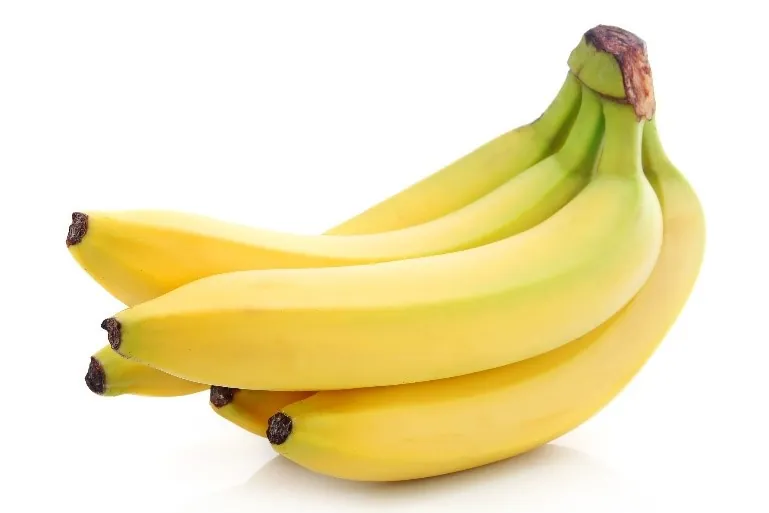
Chloride plays a very important role in maintaining proper hydration. It is also a component of stomach acid and keeps the electric charge of the fluids in the body neutral. Chloride ions are secreted and reabsorbed with sodium ions. High levels can occur with dehydration and can be seen in individuals who swallow sea water. Bicarbonate is formed from carbon dioxide and water and keeps the acid-base balance of the systems balanced. Phosphate is an important component of bones and cell membranes, among other things. Bones and teeth bind about 85 percent of phosphate in the body. Frequent use of antacids can lower phosphate greatly. The body also requires vitamin D to absorb phosphorus, so receiving enough sunlight is important for the balance.

Two extremely important electrolytes which compete for absorption if consumed together are magnesium and calcium. Strangely enough, an abundance of magnesium taken in with calcium with cause the magnesium to absorb more actively, while higher amounts of calcium will cause both magnesium and calcium to absorb poorly. According to a study in Shanghai, China, the ratio of calcium to magnesium in the body may be more important in disease and mortality than calcium levels alone, suggesting that both are important in specific amounts for the body.
Calcium provides bone hardness, where excess calcium is stored for use when it is needed in the blood. Calcium ions assist with muscle contraction and blood clotting, as well as the release of hormones and neurotransmitters. It is absorbed with the help of vitamin D, meaning a vitamin D deficiency can lead to a calcium deficiency, so both are important to prevent osteoporosis. Calcium supplements are being studied to prove or disprove a link between calcium supplementation and heart disease or stroke. Many experts feel there are too many factors at play, but recommend getting calcium from foods unless directed by your doctor.
According to the National Library of Medicine, magnesium is required for over 300 biochemical reactions in the human body. It helps in energy production, protein use, glucose levels, bone strength, immunity, nerve function, and heartbeat regulation. Researchers have been studying magnesium possibly treating and preventing several diseases and disorders like heart disease and diabetes. If you have a high intake of calcium, protein, and vitamin D, you may need extra magnesium to restore levels. Levels can be an issue in those with diabetes, intestinal disorders, and the elderly.
So now we know what electrolytes are and why they are all necessary for the body. What are some of the signs you may have an imbalance? The signs and symptoms are different depending on which electrolytes are high or low, but some common symptoms include:
- Irregular heartbeat or palpitations
- Muscle cramps and weakness
- Confusion
- Dizziness
- Numbness
- Fatigue
Causes of electrolyte imbalance can include:
- Dehydration
- Overhydration
- Diuretic use
- Certain medications (such as proton pump inhibitors, antacids, and chemotherapy drugs)
- Gastrointestinal issues such as vomiting and diarrhea
- Sweating or frequent urination
Whatever the cause, an electrolyte imbalance can be a medical emergency, so seek medical attention if there is a possibility of one. To prevent imbalance, staying hydrated without overdoing the water drinking (yes, it’s possible and dangerous) and eating food sources of electrolytes can normally allow the body to stay in balance. Here are some sources of electrolytes (minus sodium, of which most Americans get enough):
- Calcium: dairy products, fish, meat, eggs, dark leafy greens, beans, and fortified bread and cereals
- Potassium: oranges and orange juice, grapes and raisins, prunes, yogurt, spinach, bananas, sweet potatoes, avocados, melons, tomatoes, and beans
- Magnesium: leafy greens, nuts and seeds, beans, lentils, whole grains, dairy, beets, bananas, and pineapple
- Chloride: celery, seaweed, tomatoes, olives
For more articles check out our fill your plate blog. Looking for some fun recipes to make at home? Check out our recipe page.

